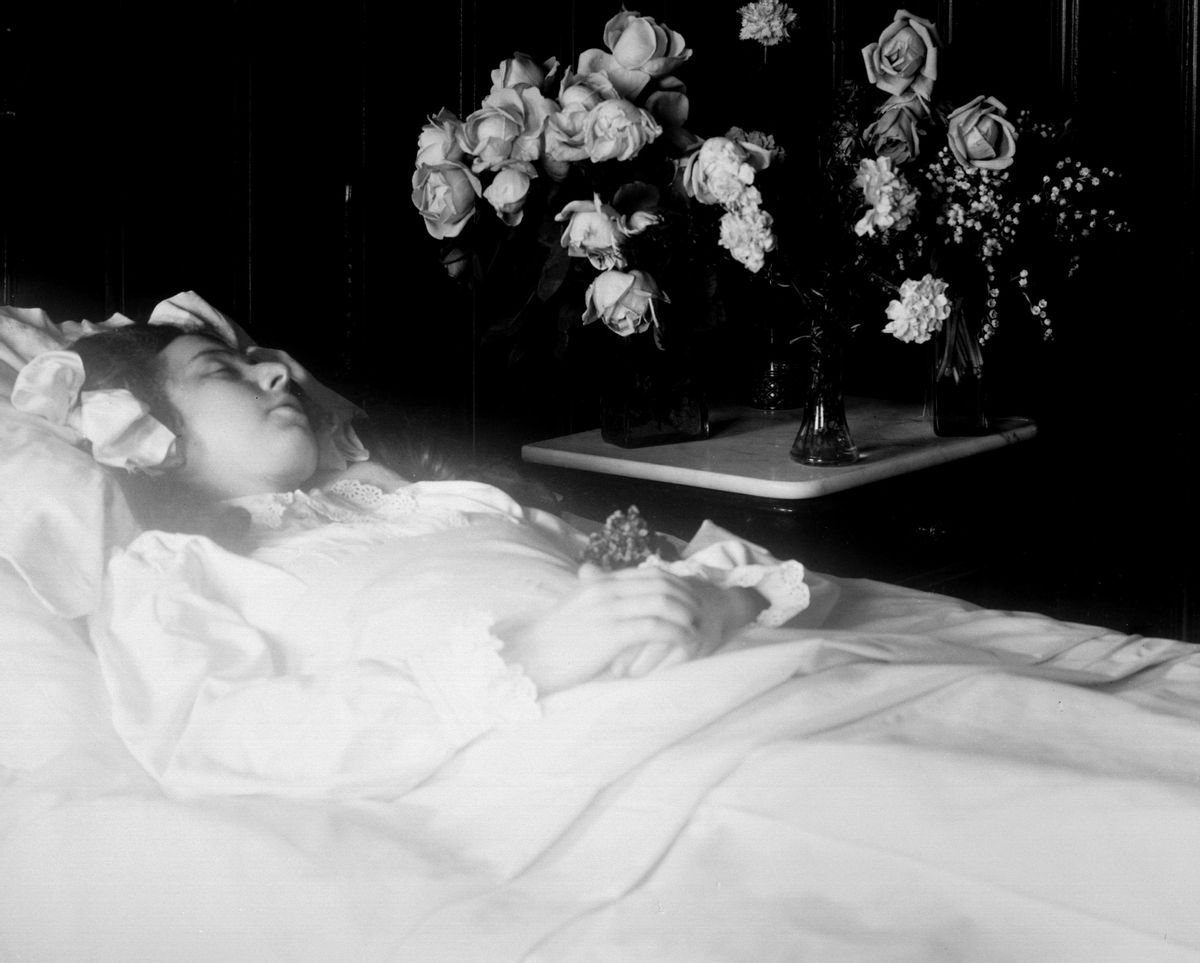With the arrival of accessible photography came a developed culture of portraiture for not just the living, but the dead. Up until the 1830s with the creation of the daguerrotype, creating an image for remembrance of your loved ones was reserved for the rich, who could commission paintings. Yet with photography came a way to preserve a family member’s image before they disappeared into the earth.

Parents with their deceased daughter, likely with her eyes painted open on the phtoograph (via Wikimedia)
A few weeks ago, Stanley Burns gave a talk at the Museum of the City of New York called “Pictures After Death” on the history of postmortem photography and how it fits into American culture. ”If you wanted to bury someone, you did the work,” Burns said of 19th century funerals before the widespread establishment of funeral homes. Death wasn’t far from life and detached as it is now, but something that could come quickly at any time and remain in your home.
Burns, an eye surgeon, founded the Burns Archive in the 1970s as a collection of historic and rare photographs. His talk was accompanied by a slideshow of some of these photographs, many of which he’s published in his Sleeping Beauty series of books on postmortem portraits.
The nearest reaction to seeing these posed corpses with their hands swollen with pooled blood and joints at twisted angles is surely revulsion, but after getting beyond our unfamiliarity with seeing death so frankly depicted is a real emotional resonance with how these images were done with love for that person. With epidemics and a high infant mortality rate, this was often the only chance for those without the funds for regular photography studio visits to take an image of their family member.

Daguerrotype of a man from 1855 (courtesy Yale Collection of American Literature, Beinecke Rare Book and Manuscript Library); Ambrotype of a young boy (1850) (via Wikimedia)
The photographs were a normal part of 19th century death, where mourning wasn’t something you were just supposed to tough out and get over quickly. There were picnics at family tombstones (also with commemorative photographs), and mementos from the family funerals would be kept in the parlor (which we in America have transformed from a room of death to, somewhat ironically, the living room). This was especially true after the Civil War when the country lost hundreds of thousands of young men and Lincoln’s embalming and funeral made both preservation techniques for elaborate funerals and a culture of mourning prevalent.

Stanley Burns speaking at the Museum of the City of New York (photograph by the author)
What Burns emphasized is that postmortem photography is still something that takes place. Bereavement photography is common at hospitals for newborns, usually done by nurses, and organizations such as Now I Lay Me Down to Sleep offer beautifully staged free memorial photographs for parents of stillborn babies. Burns ended his presentation with a photograph of him with his brother and their deceased father, illustrating that it can still be a thoughtful form of remembrance. Even if we are more startled now by images of death than a hundred years ago, there should be nothing distasteful about what was once a highly personal form of memory.
Stanley Burns’s talk on postmortem photography took place May 21 as part of a series of lectures coinciding with the A Beautiful Way to Go exhibition at the Museum of the City of New York (1220 Fifth Avenue, East Harlem). Click here for upcoming events.
More Hyperallergic
-
Learning to Love Your Image: Fan Art Meets Contemporary Art
Alicia Eler June 3, 2013 -
The Return of Organ Music in the World's Oldest Photography Museum
Allison Meier May 24, 2013


Shares